Creatine (Tag Archives)
Subscribe to PricePlow's Newsletter and Creatine Alerts
GR8 Lifestyle ULTIM8: Premium Protein + Colostrum Recovery Complex
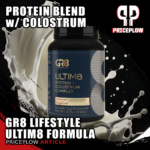
Looking for a protein powder with much more?!
ULTIM8 is one of the first five innovations from GR8 Lifestyle Supplements — it’s a premium protein formula that goes beyond traditional protein powders.
GR8 Lifestyle’s Ultim8: The Ultimate Recovery and Growth Protein PowderAs opposed to traditional protein supplements, Ultim8 is a full-blown health and […]
Continue Reading →
Nitrogen Nutrition: Major Supplement Launch Inspired by Man’s Best Friend (May 5, 2025)
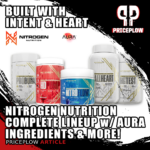
We’ve got some exciting news to share with the supplement world – Nitrogen Nutrition is set to launch on May 5, 2025, bringing a fresh lineup of premium formulations to serious fitness enthusiasts. Founded by industry entrepreneur Chandler Burner, this brand is built on both scientific excellence and heartfelt purpose.
A Brand Built[…]Continue Reading →
Animal Creatine HMB+: Advanced Muscle Growth & Strength Formula
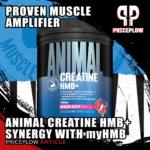
The legendary Animal brand continues to innovate in the sports supplement space with their newest staple powerhouse product: Animal Creatine HMB+. This cutting-edge formula combines the proven muscle-building benefits of creatine monohydrate with the advanced recovery and anti-catabolic properties of myHMB®, creating a synergistic effect that dramatically outperforms creatine alone.
Animal Creatine HMB+ Includes[…]Continue Reading →
Musclesport Miami Sunrise: Tropical Flavor Hits Both Amino +Hydration & Creatine +Hydration
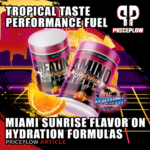
Summer vibes are here to stay with Musclesport’s vibrant new Miami Sunrise flavor, now available for both Amino +Hydration and Creatine +Hydration supplements!
Musclesport is bringing the heat with their newest flavor sensation – Miami Sunrise – now available for both their famous amino acid and creatine formulas. This tropical taste explosion perfectly captures the […]
Continue Reading →
Animal’s Spring 2025 Flavor Explosion: 5 New Releases Hit the Market

Fresh off the heels of Animal’s legendary 20th Cage appearance at the 2025 Arnold Sports Festival and their recent release of Animal Pump Pre-Workout Stim-Free Powder, the Animal team isn’t slowing down one bit. April 2025 brings a massive lineup of new flavor releases across their most popular product lines, giving fans even more options […]
Continue Reading →
Fresh Supps Creatine/HMB: Dual-Action Muscle Builder in Candy Shop Flavors!
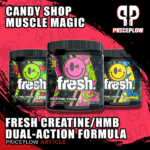
Fresh Supps continues its impressive expansion with their newest release that combines two powerful muscle-building ingredients. Founded by industry veteran Greg Helton, Fresh Supps earned PricePlow’s coveted “2023 Rookie of the Year” award for good reason – they consistently deliver effective formulas with eye-catching designs and delicious flavors.
Fresh Creatine/HMB: A Creatine + HMB Supplement[…]Continue Reading →
GHOST Basics: Simplified Essentials With High-Quality Ingredients
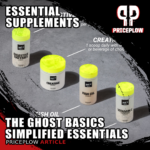
GHOST Lifestyle continues their expansion with the launch of GHOST Basics – a streamlined collection of four essential supplements designed with their trademark transparency and quality. This no-frills line features the fundamental supplements many health-conscious consumers use daily:
Creatine Fish Oil Vitamin C + Glutathione Digestive Enzymes True to their Word: Not Ignoring Supplements after[…]Continue Reading →
Creatine Myths Debunked: Basic Supplements Sets the Record Straight
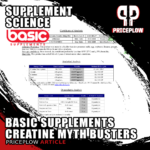
Despite being one of the most extensively researched supplements in the industry with over 500 peer-reviewed studies supporting its efficacy and safety, creatine remains surrounded by persistent myths and misconceptions. As highlighted in a recent International Society of Sports Nutrition’s (ISSN) press release, creatine is “safe, beneficial throughout the lifespan, and should not be restricted”[1] […]
Continue Reading →
CreaSol SSAT: MolTek Nutrition Unveils CreaSol SSAT (Stabilized Tyrosol) as the New Creatine Enhancer
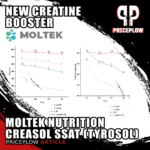
In the world of sports nutrition, breakthroughs often arise from revisiting the fundamentals and enhancing them with innovative science. Few compounds have as rich a history in human health as tyrosol — yet most aren’t even familiar with it!
Tyrosol: From Mediterranean Diet Driver to Novel Creatine EnhancerTyrosol is a powerful phenolic compound, found […]
Continue Reading →
The CAGE Turns 20: Animal’s Legendary Return to the 2025 Arnold

It’s back once again! Animal’s legendary CAGE is ready to make history once again at the 2025 Arnold Sports Festival. This year marks an incredible milestone – the 20th anniversary of The CAGE at the Arnold Expo, representing two decades of pure strength, grit, and an unwavering dedication to the iron game.
From February 28th […]
Continue Reading →

